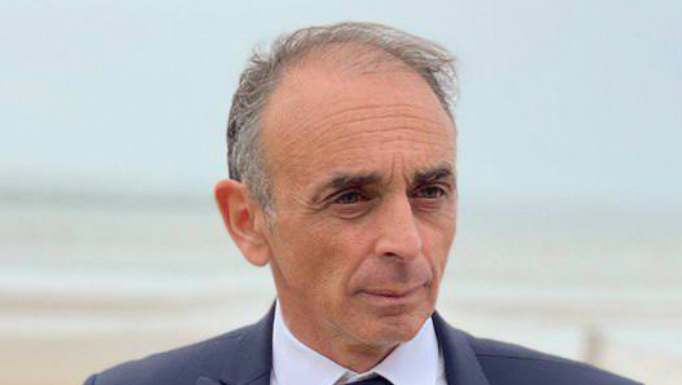On Wednesday, the European Commission will present its final proposal for the EU’s new long term budget, the 2028-2034 “multiannual financial framework” (MFF). As usual, some of the content has already been leaked, for example that it wants to create a “European Competitiveness Fund” (ECF) by merging up to 14 existing budget lines listed in the current budget.
The Commission also wants to make the EU budget more flexible, by ensuring that significantly less than 90% of the EU budget will be committed long-term from day one. It will have “fewer programmes, a higher share of unprogrammed amounts, as well as mechanisms and in-built reserves allowing for a better, faster and less disruptive response to evolving needs,” a draft regulation seen by Euractiv specifies.
At the moment, the EU is spending 1.2 trillion euro over seven years. Unsurprisingly, the eurocrats are demanding more money. Even less surprising will be that the European Parliament, an institution supposed to serve as the EU Commission’s watchdog, will be demanding an even higher increase.
The EU’s actual financial firepower is even bigger than this. This is because one needs to also take into account the 800 billion euro EU Covid recovery fund. This scheme, agreed during the Covid crisis, has been financed through jointly issued EU debt, as opposed to regular EU spending, which is largely financed through contributions from EU member states. The problem is that the debt incurred for this massive extra EU budget will need to be repaid from 2028 on. Last month, Belgium’s permanent representative to the EU, Peter Moors, shed some light on the negotiations about this, explaining that there are really a limited number of options to deal with the challenge to repay this.
Speaking at the annual EU network event of Belgium’s employer federation VBO-FEB, he listed the following options:
- Increasing national contributions to the EU
- Providing the EU with more own resources powers
- More EU debt to pay back the old EU debt
- Cut EU cohesion funds
- Cut EU agricultural funds
Suggesting that EU member states were not exactly thrilled with to any of these alternatives, he thereby noted: “Something will need to be changed. Things cannot stay the same.”
More taxes
For the European Commission, it’s clear what the preference is. In its plan, it is pushing for new taxes, particularly on large companies, tobacco, electronics waste and carbon emissions.
With its so-called “Corporate Resource for Europe” (CORE), it wants a tax for companies with a permanent establishment in the EU and over €50 million in annual net turnover. Spanish economist Daniel Lacalle rightly pointed out about this: “Imagine the EU telling people that “tariffs are taxes and hurt the economy” while proposing… even more taxes.”
The annual tax would apply to all companies with turnover in excess of €50mn after taking account of subsidies and taxes, what the EU defines as 'net turnover'. https://t.co/jLR7fLqEHR pic.twitter.com/gSVIgwGQuC
— Financial Times (@FT) July 11, 2025
Looking at opinion polls, green parties in Europe have lost even more support since their low at the June 2024 European Parliament elections, but eurocrats still do not seem to have received this message. They now will propose yet another green contribution, on non-recycled electronics waste. Other EU taxes that are supposed to finance EU spending are the existing ETS climate tax scheme, which is making energy punitively expensive for European companies and consumers, and the EU’s protectionist Carbon Border Adjustment Mechanism (CBAM), a climate tariff designed to punish trading partners that refuse to copy the EU’s suicidal climate policies. It must be added that most of the revenue of these schemes will still go to national budgets.
Tellingly, the Financial Times reveals that the EU Commission’s grand plan could have hit taxpayers even more badly, as the Commission appears to have ruled out several other revenue raising options under consideration, including a controversial carbon tax on home heating and road transport or collecting entry fees from the EU’s new border system. The Commission has also been forced to drop its plan for a tax on digital services, due to the opposition of US President Donald Trump. It did however keep the proposal for a “handling fee” for long-distance ecommerce packages, a levy deemed to mainly hit imports from China, and of course ultimately European consumers.
What eurocrats most certainly want to push through is increasing taxes on tobacco. The FT notes that “the amounts to be raised remain in brackets in the draft, suggesting that they still need to be agreed within the Commission”, but according to Euractiv “the Commission has considered a 139% tax hike on cigarettes.”
Sweden’s Finance Minister Elisabeth Svantesson already came out strongly against this EU Commission attempt to grab more tax powers, She called it “completely unacceptable” and pointed out that the Commission not only wants to tackle tobacco products, but also alternatives to tobacco: “It seems that the European Commission’s proposal would mean a very large tax increase on white snus and, in addition, the Commission wants the tax revenue to go to the EU and not to Sweden.”
Det verkar som att EU-kommissionens förslag skulle innebära en väldigt stor skattehöjning på vitt snus och dessutom vill kommissionen att skatteintäkterna ska gå till EU och inte till Sverige.
— Elisabeth Svantesson (@ElisabethSvan) July 8, 2025
The fact that this kind of criticism comes from Sweden makes it even more difficult for the EU Commission to claim that its massive tax hike is going to benefit public health. The country is the only EU member state with an exemption from the EU ban on snus, which serves as an alternative to smoking tobacco. The results are clear, after three decades: Not only does Sweden has among the lowest smoking rates in Europe, but it also has a much lower incidence of smoking-related diseases. In comparison to other EU countries, Sweden has 44% fewer tobacco related deaths, 41% lower lung cancer rates and 38% fewer cancer deaths.
The European Commissioner responsible for revising the EU’s Tobacco Excise Tax Directive, Wopke Hoekstra, is most certainly on board with higher taxes for both tobacco and alternatives to it. At a hearing at the European Parliament, he stated: “Smoking kills, vaping kills.” He thereby equated the two, even though according to the UK government’s health department, “best estimates show e-cigarettes are 95% less harmful to your health than normal cigarettes.”
Hoekstra has been facing sharp criticism for his approach, for example from Czech MEP Alexandr Vondra, a member of the governing ODS party and a former Minister. He warned: “Drawing lessons from Communist Czechoslovakia, outright bans only create a black-market demand that encourages crime and put consumers at risk.” Polish MEP Ryszard Czarnecki pointed out that such policies would affect “the livelihood of thousands across rural Poland”. Equally, Italian MP Riccardo Augusto Marchetti, a member of the governing Lega party, warned about the effects on industry in his country.
Problematic spending
In 2019, during the previous negotiations for the EU’s long term budget, I presented a paper to the EU Committee of the German Bundestag summarizing the problems with EU spending. Pretty much none of the problematic aspects that I highlighted – wasteful and fraud-sensitive agricultural and regional subsidies, as well as spending for the EU’s bloated bureaucracy – have been addressed since then. On the contrary, lots of extra “green” spending, defence spending and “Covid recovery” spending were added to the bill for taxpayers.
Even on areas where the EU Commission may actually be prepared to make changes – the EU’s dysfunctional agricultural spending – change appears to be impossible. Massimiliano Giansanti, the head of Europe’s powerful Copa farming lobby warned “I have the tractor and I’m ready,” in response to potential cuts to the EU’s massive farm subsidies. Those amount to €386.6 billion, around a third of EU spending. Apart from the fact that the massive handouts to farmers enable bureaucrats to keep European farmers subject to what increasingly amounts to central planning, it is also a public secret that there is gigantic fraud associated with all of it. Only two weeks ago, four Ministers resigned in Greece over a scandal related to EU agricultural spending, resulting in Greece being subject to a 415 million euro fine from the EU.
Close to a hundred suspects from or linked to mafia clans are standing trial in Italy for setting up a system that resulted in at least €10 million in stolen EU agricultural funds. https://t.co/as1MOFAPfg
— POLITICOEurope (@POLITICOEurope) March 6, 2021
Also EU regional funds – which equally amount to almost a third of EU spending – haven’t exactly been a great success. One relatively optimistic study last year found that “EU regional funds spur growth and have a reasonable fiscal multiplier” but “most income gains end up in the pockets of relatively wealthy households.” A 2016 study by German economists for the reputed Centre for Economic Policy Research however concluded that “EU structural funds [are] negatively correlated with regional growth” and “[do] not seem to contribute effectively to foster income convergence across regions.”
Persisting cronyism
In any case, lots of cronyism seems to be attached to EU spending. Over the years, the European Court of Auditors, which is the EU’s financial watchdog, has been criticising the increase in errorenous EU spending. In 2024, the institution complained that €15bn in cohesion funds had been misspent due to failures committed both by the European Commission and by member states.
How precious #mff #eubudget cash is spent: https://t.co/xJQ5WckrDs
— Pieter Cleppe (@pietercleppe) July 4, 2024
In 2021, Professor Vince Musacchio, a renowned anti-corruption expert from the Rutgers Institute on Anti-Corruption Studies, warned that between 2015 and 2020, the EU has allocated around €70bn to Italy in structural & investment funds. Half of these funds ended up in the hands of organised crime.”
One would think that this would make policy makers hesitant to arrange for even more financial transfers within the EU, but the EU’s Covid recovery fund, effectively its second budget, seems to be performing even worse.
Also in 2021, the likes of Europol’s Executive Director, Catherine De Bolle and Davide Del Monte, Italy Director at Transparency International, have issued stern warnings about the EU’s recovery fund, which was about to be launched. Del Monte then openly stated: “the mafia is waiting for all this money to flow into the Italian economy”, adding that this is a pan-European issue as “they use trust funds in Luxembourg, they open bank accounts in the UK or in the Netherlands, and then open business firms all over Europe”.
Even the Italian judicial authorities warned about it at the time. Maurizio Vallone, Italy’s top investigator on organized crime, stated in 2021 that “the mafia has been choosing the companies that are best-placed to take part in recovery fund tenders, especially in the health and infrastructure sectors where a great deal of money will be spent.”
EU policy makers decided to continue with the recovery fund anyway, and with dire consequences. In May, Italy’s anti-mafia agency pointed out that public works linked to Italy’s EU-backed post-COVID Recovery Fund were in danger of mafia infiltration.
From guns to grants: Mafia eyes Italy’s billions in EU recovery funds https://t.co/jdkWwJT4Bc pic.twitter.com/gYDaR1NeOb
— Euractiv (@Euractiv) June 11, 2025
Earlier this year, the EU Court of Auditors issued a very critical report on how the precious resources of the EU Recovery Fund had been spent and lent, with Croatian Court of Audit member Ivana Maletić even calling the experience “completely absurd”, saying: “EU policymakers should not allow such instruments in the future unless they first have information about the actual costs and the final recipients. They must also have a clear answer to the question of what citizens actually get for their money.”
In its report, the European Court of Auditors estimated that the EU will spend more than 20 billion annually on repayments and interest from 2028 on to pay back its effective second budget. This is a massive drag on the new long term EU budget, as it amounts to about 20 percent of annual spending. For this reason, the European Commission has also already been pushing for taking out more jointly issued debt (Eurobonds) in “crisis situations”, to ultimately also help repay the debt incurred to finance recovery fund spending. Thankfully, frugal member states are resisting this. For now. At least for defence spending, it looks like we will get more common debt issuance. A resolution by the Dutch Parliament opposing this is simply ignored.
Business as usual
For years now, the problem of problematic EU spending persists.
Already in 2019, the Court of Auditors openly criticized the EU’s anti-fraud body OLAF, stating that when it comes to dealing with misuse of EU expenditure, “OLAF’s results are truly, very surprisingly weak.”
Having seen some of the Commission’s draft proposals, an article by Euractiv notes that one thing is noticeably absent: a serious plan to stop EU cash from being siphoned off by fraudsters.” Reportedly, “annual losses from fraud – particularly in agriculture, cohesion funds, and procurement – are estimated to exceed €1 billion a year, according to recurring audits by the European Court of Auditors and European Anti-Fraud Office (OLAF). The true figure is likely much greater, given inconsistent enforcement and widespread underreporting. Most of the money is never recovered, or is clawed back by national authorities rather than the Commission.”
On top of this comes “an unresolved turf war between two EU watchdogs responsible for protecting the budget: the longstanding Commission-affiliated OLAF and the newly created and independent European Public Prosecutor’s Office (EPPO).” The article quotes an EU official who laments the lack of urgency in the Commission’s strategy, stating: “If we’re going to ask citizens to accept budget discipline, we should start by showing that the money isn’t being stolen.”
That would indeed be a good start.
"As the EU Commission prepares to pitch its next long-term budget framework on Wednesday, one thing is noticeably absent: a serious plan to stop EU cash from being siphoned off by fraudsters" #eubudget #mff https://t.co/OJFW2OY2qS pic.twitter.com/owf6I4RVdz
— Pieter Cleppe (@pietercleppe) July 14, 2025













